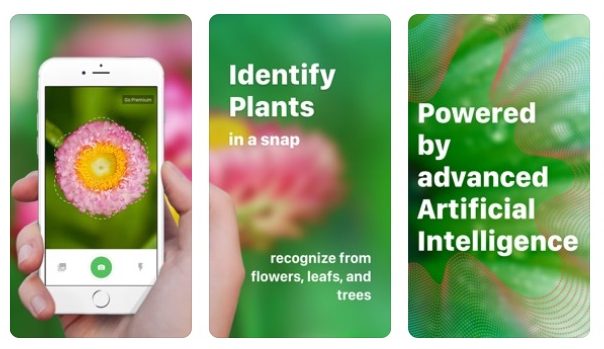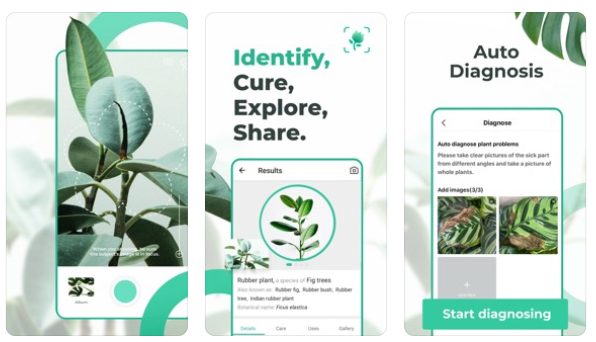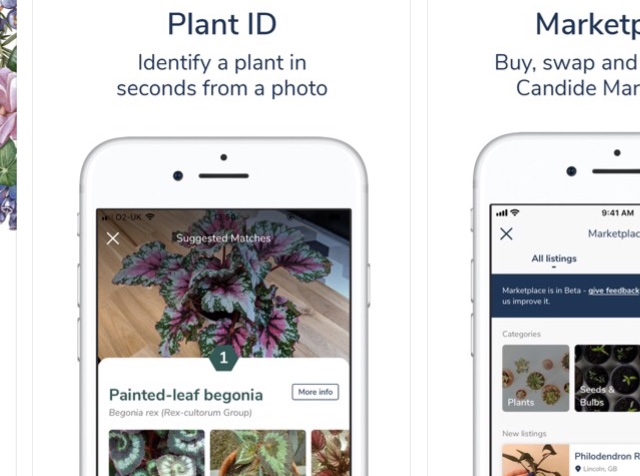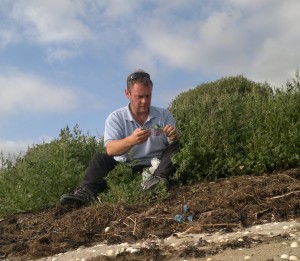Plant and Fungi Identification Apps: Careful Now!
Plant and fungi ID apps are now widely available and seem to be well liked by many people who use them, including foragers. I welcome the way they can bring the pleasures of connecting with plants to a wider audience, but think there is a danger that some foragers place too much faith in their accuracy. This recent study of several of the most popular apps found that the apps seldom exceed 50% accuracy. Further to their unreliability and the dangers this could bring to novice foragers that aren’t aware of their shortcomings, I fear that they also have the potential to undermine the development of personal identification skills, and risks turning the reciprocal relationships with plants and fungi, and the ecosystems of which they are part, into transactional encounters. Placing too much confidence in the wisdom of a logarithm can be dangerous.
Would you prefer to learn from a human..? Check out my online 1-to-1 mentoring.
Here is a genuine example of what can happen if you place too much trust in an ID app. This is quoted directly from an email I received. Although it mentions a specific app, I think it could just as well have referred to many others:
“Google lense is NOT a friend! Whilst out gathering ramsons, nettles, cleavers and ground elder I spotted a beautiful carpeting of green. Clicked Google lense, it said something like “garden greens, edible” and so I picked one medium sized leaf and ate it..Within minutes my mouth was uncomfortable, in half an hour my neck and cheeks became a little swollen, in an hour I had stomach cramps and diarrhoea, my lips went pale as did the tips of my fingers, the hairs were up on my forearms, I felt a bit whoosy and very cold..Luckily I had taken a picture of the stuff. Researched at home and found out I’d eaten dog mercury, raw. I drank a cup of water with a teaspoon of bicarbonate of soda. Went to bed to warm up, ate toast, oreos, a veg curry, more water. Told a friend, just incase things got worse. 2h after the foraging harsh lesson in due care, I was back to normal..One leaf..Lesson learned! Multiple sources of checking before even a nibble now. I’ve moved on, sweet woodruff wine and spruce juice/syrup in the making. I’m enjoying learning too much to stop now..If you’d like to use my tale of eating a highly poisonous plant, feel free. Still reeling that one leaf (from the top of the plant) had so much effect. Either I’m a truly sensitive soul or that stuff is a firm warning that nature is a rascal indeed! “
I would draw a comparison with GPS navigational gadgets, which I have more experience of from my time in Mountain Rescue. While navigational gadgets and mapping apps can be incredibly useful, there is a tendency to become over reliant on them at the expense of proper map and observational navigation skills. This is potentially dangerous: electronic gadgetry can break down leaving you lost unless you’ve worked on some practical skills too. Also, i’ve been involved in rescues of hillwalkers who followed lines that their GPS has drawn for them into very precarious situations!
Beyond the dangers, I also think its a bit sad: a journey should be about so much more than getting from A to B as quickly and efficiently as possible.
Its the same for plants, and you can think of the process of getting to know them a bit like a journey. Do you want to go directly from A to B, without seeing or learning anything en-route? Or would you rather conciously follow the path that that beckoning leaf or enticing scent invite you to follow?
If you are hoping to go out into the wild and gather ingredients from nature as you would pluck produce from a supermarket shelf, I would suggest that you have the wrong idea about foraging.
The very process of meeting, trying to identify, puzzling, getting frustrated, revisiting, trying again, exploring more resources, enquiring, learning more about the species and its relations, feeling good about your identification, taking personal responsibility for what you choose to put in your body, researching recipes, refining and crafting your harvesting strategy for that species in that location…all of these, and more, are how you meet, greet, get to know, and develop a relationship with a plant, fungi or seaweed.
Taking that time to get to know a species will also open up other avenues of enquiry, and your knowledge will grow organically. You’ll also be more likely to understand how both the species and yourself fit into our wider ecology. You’ll start to recognise species by their family traits and learn to key-out your finds methodically, at first by following a written key, but soon you’ll be doing that in your head, and after a while of this you’ll reach the point where this happens so easily it starts to look like “feel” or “instinct”.
So by all means add apps to your toolkit (alongside books, friends, experienced foragers, well written websites, social media, instinct, animals, wider research, and (ahem) going out with an experienced guide), but please don’t fall in love with them.
Rather, fall in love with the process of learning, and all the amazing things you meet along the way.
Related Posts:





5 Comments
Well said. Foraging is a journey about cultivating relationships with our plant family. The gifts we receive from plants go far beyond the act of ID and consumption. Thank you for the thoughtful article!
The googles results page is basically any images it finds on pages about the mushroom your searching for. These pages often include images of similar but poisonous mushrooms you need to avoid, and those images will get included in the search results.
Yes, I think that is what I said in my post.
Brilliantly written – I think the key words that stand out for me are, Journey and organic. I’ve been fascinated with fungi and would love to learn about foraging. I’ll use your knowledge and wisdom as a key in my foundation for learning. Thanks!
Personally I tend to use them as an extra tool to help me learn. For example, if I see something and think I remember what it is, and then the app backs that up, it gives me a little more confidence in my identification (whether I’m planning to harvest that day or just to practise identifying). If the app seems unsure, I treat its verification accordingly. I also use foraging books and guides, and I’ve been on a couple of foraging courses. It’s about using lots of data points to back up your own knowledge when you’re still learning.
The idea of tramping randomly into the woods, aiming your camera at something you’ve never seen before and eating it based on AI alone is quite frankly terrifying!
As for specific apps, iNaturalist is the best by far if you don’t need immediate feedback, as it allows experts and hobbyists to chip in and help with the identification. Seek, made by the same people, but an automatic version, is a pretty good second – but use it sensibly. If it gets down to species level in seconds, chances are it’s pretty confident and not something that’s easily confused with another species. If that identification backs up what you already thought it was, you can be pretty sure you’ve got it right. If it can’t get an ID, or it keeps swapping between two different families, or just hovers at order level or something, then don’t rely on it, even if it eventually gives you a species.
Relying Google lens or Google images is just asking for trouble!